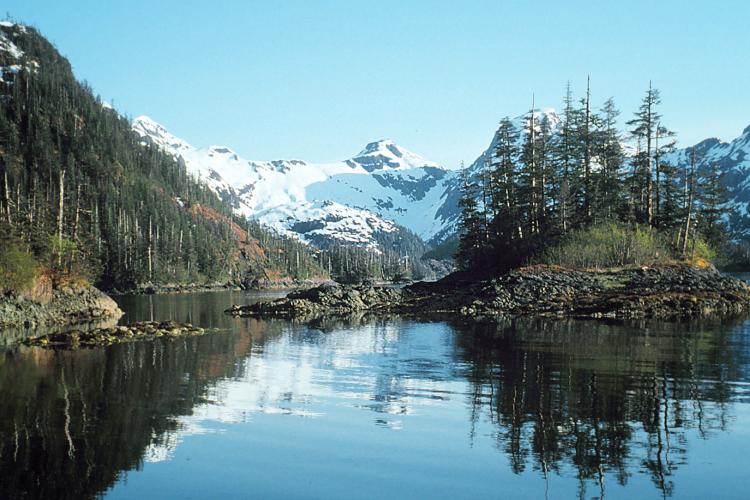Anticipating and Adapting to Climate Change
The Gulf of Alaska ecosystem supports valuable and diverse marine fisheries, annually producing $1.3-2.1 billion dollars first wholesale value, and many other important recreational and subsistence uses. Most of the human population of Alaska resides in the Gulf of Alaska region. Large changes in climate are expected in the Gulf of Alaska in the coming decades. Projected changes include warming of ocean waters, decreases in ocean pH, sea level rise, changes in ocean circulation and stratification, and potential changes in species distributions, ecosystem productivity, and food-web structure.
This multi-disciplinary modeling effort applies a regional lens to global climate models. Scientists are combining regional socio-economic, oceanographic data and biological models including single-species, multispecies and ecosystem models to develop a regional multi-model (an ensemble model) to provide quantitative advice to support resource management given climate variability and long-term change. This is an interdisciplinary collaboration, and a complement to a successful project developed for the eastern Bering Sea, ACLIM. One important management application of this research is to evaluate the Optimum Yield (OY) range (160,000–800,000 t) in the Groundfish Fishery Management Plan for the Gulf of Alaska in a changing climate.
Scientists are beginning to address the critical need to anticipate climate change impacts on the Gulf of Alaska marine ecosystem and its inhabitants. By providing near-term and long-term projections, scientists hope to help resource managers and local communities anticipate and better plan for environmental and ecological changes due to Climate Change in the Gulf of Alaska. This effort represents a substantial step towards meeting the objectives of the Gulf of Alaska Climate Science Regional Action Plan and the NOAA Fisheries Climate Science Strategy.
Project Focus
- Research Pathway 1: Develop and apply the Atlantis model as an element of a multi-model ensemble to evaluate fisheries management strategies in a changing climate.
- Combine oceanographic modeling driven by climate projections of earth system models (ESM) with biological models including single species, multi-species, and ecosystem models. This includes the Atlantis end-to-end ecosystem model, food web models for the Gulf of Alaska (Ecopath and Ecosim) and a Gulf of Alaska multi-species (CEATTLE).
- Explore recent climate change impacts on the Gulf of Alaska social-ecological system (e.g., use the 2013-2016 marine heat wave, PDO variation, and climate projections as natural experiments to explore ecosystem-level and species-specific responses to physical forcing).
- Apply the coupled climate-biological-social multi-model ensemble to explore the implications of long-term changes in physical forcing on various management questions (e.g., current OY range in the Gulf of Alaska; implementation of catch share programs, etc.), taking into account model uncertainty.
- Evaluate performance of management strategies under climate change (e.g., estimate system-level OY for Gulf of Alaska using the multi-model ensemble)
- Research Pathway 2: Evaluate and predict the impacts of major environmental anomalies to an endangered population of Steller sea lions using the 2013-2016 marine heatwave as a natural experiment.
- Research Pathway 3: Model fleet dynamics and fishery landings responses to ecosystem and management change
Gulf of Alaska Climate Integrated Modeling Socioeconomics—from Climate to Communities
- This project will examine how individuals, families, and communities may adapt to climate variability and associated changes in fisheries and marine ecosystems. It will also identify the factors underlying adaptation choices, and tradeoffs associated with those adaptations. Predicted fleet responses and adaptations will be coupled with regional economic models to understand potential economic impacts on fishing communities. In turn, fleet behavior will feed into biological models to understand changes in harvest patterns and species composition of catch.
- Researchers developing this component of the project are looking for input from stakeholders.

